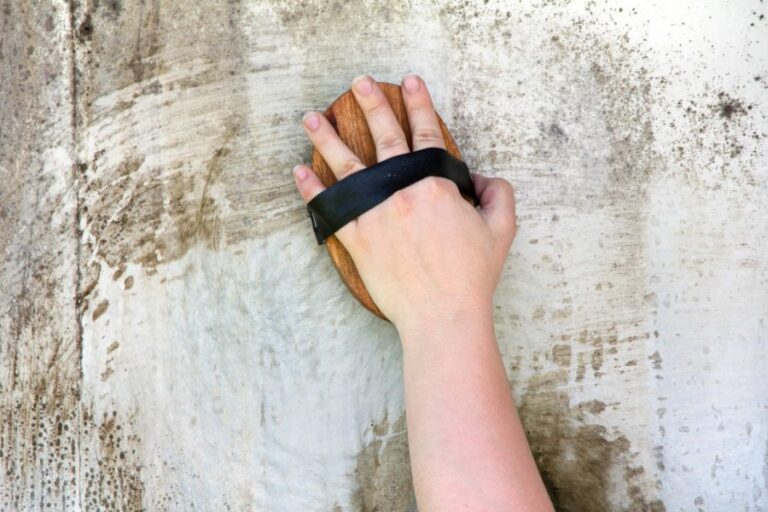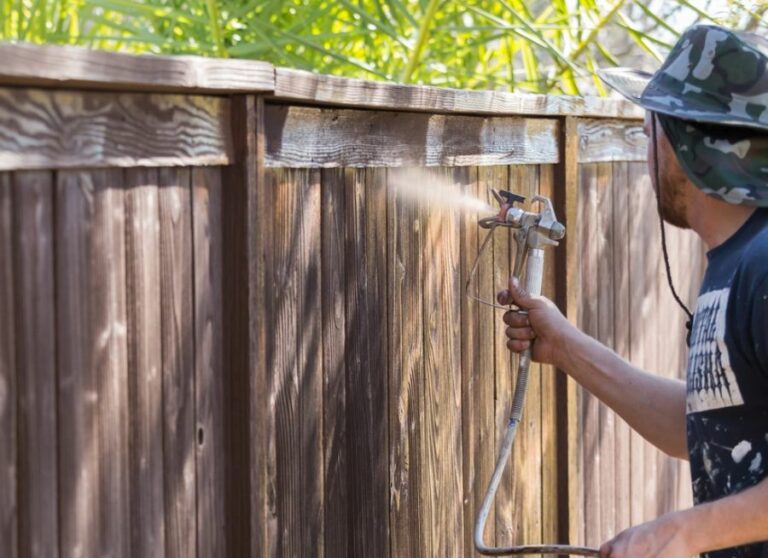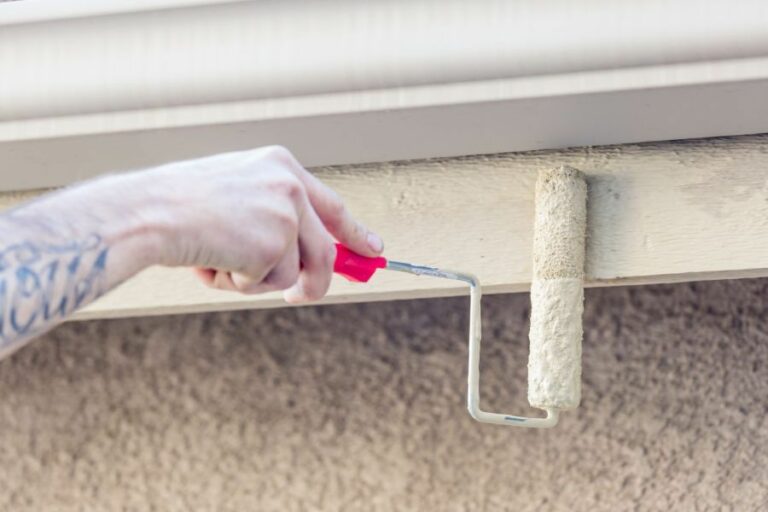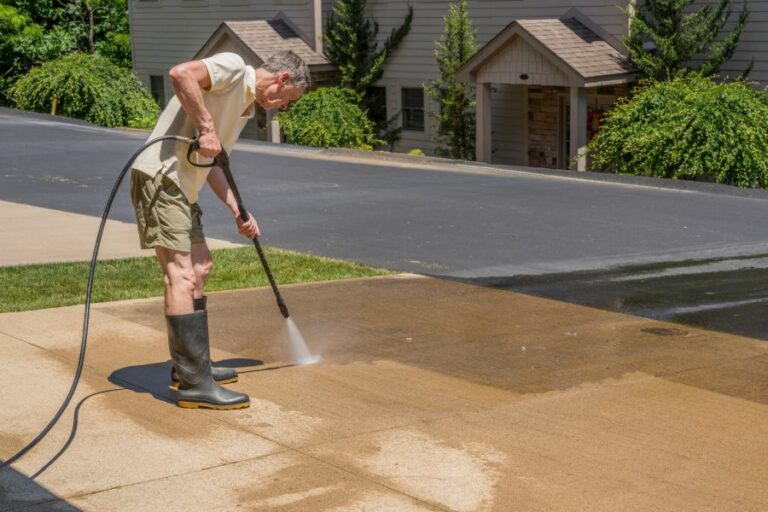Intense Exterior Surface Pressure Wash. What Pros Say
Are you tired of trying to get rid of tough stains and grime from your exterior surfaces? We understand the frustration of time-consuming scrubbing and less-than-ideal results. Don’t worry! We have the perfect solution for you. You just need an intense exterior surface pressure wash.
Intense exterior surface pressure wash:>
Intense exterior surface pressure washing effectively removes embedded dirt, grime, and stains from various surfaces, enhancing curb appeal, prolonging surface lifespan, and increasing property value. Suitable surfaces include concrete, brick, stucco, wood, and roof tiles. To achieve optimal results, use the appropriate pressure washer, accessories, and cleaning procedure while considering environmental impacts.

Ready to witness the astonishing transformation your home’s exterior can undergo with an intense pressure wash? Unlock the secrets behind this powerful cleaning method, its benefits, and the precautions you need to take. Stay tuned. Your home’s best look awaits!
Contents
- 1 Powerful Outdoor Surface Pressure Cleaning
- 2 Discover the Most Potent Pressure Washer
- 3 Understanding Heavy-Duty Pressure Washing
- 4 Techniques for Pressure Washing Elevated House Areas
- 5 Effective High-Pressure Driveway Cleaning Methods
- 6 Evaluating Pressure Washer Surface Cleaner Effectiveness
Powerful Outdoor Surface Pressure Cleaning
• Benefits of Intense Pressure Washing
Intense exterior surface pressure wash is a highly effective technique to remove embedded dirt, grime, mildew, and stains from various types of surfaces. This cleaning method delivers numerous benefits:
- Enhances Curb Appeal
- Prolongs Surface Lifespan
- Provides a Healthy and Clean Environment
- Increases Property Value
- Preps Surfaces for Painting & Sealing
• Appropriate Surfaces for Intense Pressure Washing
Different surfaces require specific pressure washing treatments. Here is a list of surfaces suitable for intense pressure washing:
- Concrete (sidewalks and driveways)
- Brick and Stone (walls and floors)
- Stucco and Siding (exterior walls)
- Wood (decks and fences)
- Roof Tiles (concrete, clay, or slate)
- Outdoor Furniture (plastic, metal, or wood)
Important Tip: Avoid pressure washing soft materials such as vinyl, fabric, and delicate woods, as they can be damaged by the high pressure.
• Choosing the Right Pressure Washer
Pressure washers come in various sizes and specifications; therefore, it is crucial to select a suitable machine for the task. To help you decide, consider the following factors:
- Pressure (measured in pounds per square inch or PSI)
- Water Flow (measured in gallons per minute or GPM)
- Features (nozzles, pressure adjustments, soap applicators)
Recommendation: For intense exterior cleaning tasks, a gas-powered pressure washer with a PSI range of 3000 to 4000 is best suited.
• Pressure Washer Accessories
Using the right accessories can significantly improve pressure washing efficiency. Some essential accessories include:
- Spray Nozzles: Different nozzle angles (0, 15, 25, 40, and 65) allow specific pressure settings and spray patterns.
- Surface Cleaners: A circular attachment with rotating nozzles makes cleaning large and flat surfaces more manageable.
- Extension Wands: Ideal for reaching high areas (roofs, gutters) without the need for a ladder.
- Brushes: A rotating scrub brush attachment helps in the deep cleaning of surfaces (brick, stone, or concrete).
• Effective Pressure Washing Procedure
Intense exterior surface pressure washing can be made more efficient by following these essential steps:
- Pre-Cleaning: Remove any debris and loose dirt from the surface to be cleaned.
- Safety Measures: Wear protective gear, including goggles, gloves, and closed-toe shoes.
- Water Connection: Ensure a proper water connection with a sufficient water supply for the pressure washer.
- Choose Accessories: Select the appropriate nozzle or attachment for the specific surface and cleaning task.
- Test the Surface: Perform a test spray on a small, inconspicuous area to ensure the pressure setting does not damage the material.
- Apply Cleaning Agent: Most pressure washers have a detergent dispenser for applying cleaning solutions onto surfaces.
- Systematic Cleaning: Work in overlapping sections and maintain a consistent distance from the surface for even cleaning.
- Post-Cleaning Inspection: Examine the cleaned surface for any stubborn stains or residue, and re-clean if necessary.
- Rinse and Dry: After cleaning, thoroughly rinse the surface with water, and allow it to dry.
• Maintaining Your Pressure Washer
Regular maintenance of the pressure washer machine is essential to ensure its efficiency and longevity. Some essential maintenance tips include:
- Check Oil Levels: Ensure the engine and pump oil levels are adequate before each use.
- Replace Oil: Replace the engine and pump oil according to the manufacturer’s guidelines.
- Clean the Air Filter: Regularly inspect and clean the air filter; replace it if damaged or clogged.
- Inspect the Water Inlet Filter: Check and clean the water inlet filter to avoid dirt particles entering the pump.
- Store Properly: Drain water from the machine and store it in a cool and dry place when not in use.
• Environmental Considerations
One must be cautious of the environmental impact of pressure washing. Here are some essential tips for eco-friendly cleaning:
- Use Biodegradable Cleaning Agents: Opt for environmentally friendly soaps and detergents.
- Minimize Water Usage: Use a pressure washer with an adequate GPM rating to reduce water wastage.
- Dispose of Waste Properly: Dispose of waste materials and cleaning solutions according to local regulations.
In conclusion, intense exterior surface pressure washing is an efficient and effective method for deep cleaning various surfaces.
By using the appropriate equipment, following systematic cleaning procedures, and maintaining the pressure washer, you can achieve excellent results while minimizing any environmental impact.
Discover the Most Potent Pressure Washer
• Introduction to Pressure Washers
Pressure washers are powerful cleaning tools that use water sprayed at high pressure to clean various surfaces, such as vehicles, buildings, and other objects. By applying strong water pressure, these washers can remove dirt, grime, and debris more efficiently than manual cleaning methods.
• Types of Pressure Washers
Before diving into the strongest pressure washer, it is essential to understand different types. There are three primary categories of pressure washers:
- Electric Pressure Washers: These units run on electricity and are typically lightweight and portable. They are suitable for small-scale cleaning tasks around the home but may lack the power and performance required for more demanding jobs.
- Gas-powered Pressure Washers: These models are fueled by gasoline and offer significantly more power and pressure than electric models. They are suitable for heavy-duty cleaning tasks and are often used by professionals or homeowners with large-scale projects.
- Diesel-powered Pressure Washers: Similar to gas-powered models, these pressure washers utilize diesel fuel and are known for their power and durability. They are primarily used for commercial and industrial cleaning purposes.
• Defining the “Strongest” Pressure Washer
When it comes to determining the strongest pressure washer, several factors come into play. These factors include:
- Pressure: Measured in pounds per square inch (PSI), the pressure output is the most critical factor in determining the strength of a pressure washer. Higher PSI values indicate stronger pressure and increased cleaning power.
- Water Flow Rate: The amount of water dispensed per minute, measured in gallons per minute (GPM), plays a significant role in the efficiency of a pressure washer. A higher GPM allows for faster and more effective cleaning.
- Cleaning Power Units (CPU): This measurement takes both PSI and GPM into account, providing a more comprehensive indication of a pressure washer’s overall performance. To calculate CPU, simply multiply PSI by GPM.
By considering these three factors, we can identify the strongest pressure washer on the market.
• The Strongest Pressure Washer: Simpson Powershot PS60843
The Simpson Powershot PS60843 gas-powered pressure washer stands out as one of the strongest and most reliable pressure washers available. With an impressive 4,400 PSI and 4 GPM, this pressure washer delivers a CPU of 17,600, outperforming many other models in its class.
– Key Features
The Simpson Powershot PS60843 boasts a variety of features that contribute to its superior performance, such as:
- A reliable and powerful Honda GX390 engine known for its durability and consistent performance.
- AAA Industrial triplex plunger pump, designed for longevity and maintenance-free operation.
- Welded steel construction frame for enhanced durability and resistance to wear and tear.
- 50-foot non-marring hose, allowing for mobility and adaptability to various cleaning tasks.
- 5 Quick-connect nozzle tips (0, 15, 25, 40, and soap) for versatile cleaning applications.
- Professional spray gun with safety lock-out to prevent accidental operation.
– User Experiences
Users of the Simpson Powershot PS60843 consistently praise its robust cleaning power and efficient performance. This pressure washer is capable of tackling the most challenging cleaning jobs, such as stripping paint, degreasing concrete, and cleaning heavily soiled surfaces.
Many homeowners and professionals alike have found this pressure washer to be a valuable addition to their cleaning arsenal.
– Recommendations and Safety Tips
Based on personal experience, the Simpson Powershot PS60843 is a top-notch pressure washer capable of handling even the toughest cleaning tasks. However, due to its immense power, it is crucial to prioritize safety when using this machine. Here are some safety tips to follow:
- Always wear protective gear, such as goggles and gloves, to protect yourself from debris and high-pressure water.
- Keep a safe distance from the surface you are cleaning to avoid damaging the material or causing injury.
- Make sure the pressure washer is on a stable and level surface before starting it up.
- Always read and follow the manufacturer’s guidelines and recommendations for proper use and maintenance.
• Conclusion
The Simpson Powershot PS60843 stands out as the strongest pressure washer on the market, balancing power and efficiency in a durable, professional-grade machine.
By considering factors such as PSI, GPM, and CPU, this pressure washer proves its superiority in terms of strength and performance. Whether you’re a professional or a homeowner tackling large-scale cleaning projects, the Simpson Powershot PS60843 is an excellent investment that will stand the test of time.
Understanding Heavy-Duty Pressure Washing
Hard-pressure washing, also known as high-pressure washing, is a cleaning technique that utilizes a high-pressure water spray to remove dirt, grime, stains, and other unwanted substances from various surfaces. This method is particularly effective in cleaning hard and tough-to-reach surfaces like concrete, wood, brick, and metal.
• Components of Hard Pressure Washing Systems
A typical hard-pressure washing system consists of the following components:
- Pressure washer: This is the core of the system and generates the high-pressure water necessary for the cleaning process. It can be powered by electricity, gas, or diesel.
- Nozzles: These are attached to the pressure washer wand and control the water spray pattern. Different nozzle types are available to achieve the desired cleaning effect, such as a narrow spray for concentrated cleaning or a wide spray for covering larger areas.
- High-pressure hoses: These durable hoses transport water from the pressure washer to the wand and nozzle.
- Detergents and chemicals: In some cases, detergents or chemicals can be added to the water to break down and remove tougher stains or grime effectively.
• Common Applications of Hard Pressure Washing
Hard-pressure washing is widely used across various industries and settings. Some of the most common applications include:
- Residential cleaning: Homeowners utilize a pressure washer for cleaning driveways, sidewalks, fences, and exterior walls. This method is also ideal for cleaning outdoor furniture, decks, and patios.
- Commercial cleaning: Businesses use pressure washing to maintain the cleanliness of building exteriors, parking lots, and sidewalks. It’s also commonly used for graffiti and chewing gum removal.
- Industrial cleaning: Hard pressure washing is an essential tool in various industrial settings, such as construction sites and manufacturing facilities, for removing dirt, grease, and other heavy-duty contaminants.
- Vehicle cleaning: Pressure washing is an effective method for cleaning large vehicles and equipment, such as trucks, buses, and construction machinery.
- Agricultural cleaning: Farmers use pressure washing to maintain the sanitation of their farming equipment and facilities, including barns, pens, and animal housing areas.
• Benefits of Hard Pressure Washing
The advantages of incorporating hard pressure washing into your cleaning routine are numerous. Some of the most noteworthy benefits include:
- Time-efficiency: Hard pressure washing can significantly reduce the time spent on cleaning tasks compared to manual scrubbing or other conventional methods.
- Cost-effectiveness: With lower labor costs and less need for specialized cleaning products, pressure washing proves to be a cost-effective solution for many businesses and homeowners.
- Environmental impact: By using minimal water and requiring fewer chemicals, hard pressure washing can be considered an eco-friendly cleaning method.
- Surface preservation: Properly executed hard pressure washing can restore the appearance of surfaces without causing damage, ultimately prolonging their lifespan and maintaining their aesthetics.
- Improved health and safety: By eliminating dirt, mold, and other contaminants, hard pressure washing helps maintain a healthier and safer environment in both residential and commercial settings.
• Safety Considerations for Hard Pressure Washing
While hard pressure washing is an effective and convenient cleaning method, it’s crucial to follow safety guidelines to prevent injuries and property damage. Some essential safety practices include:
- Wear appropriate protective gear: Protect yourself with safety goggles, gloves, and closed-toe shoes to prevent injuries from high-pressure water or debris.
- Choose the correct nozzle: Utilize the appropriate nozzle for each cleaning task based on the surface material and the desired cleaning intensity.
- Keep a safe distance: Maintain a safe distance between the pressure washer nozzle and the surface being cleaned to avoid damage.
- Never spray people or animals: High-pressure water can cause severe injuries, so always be cautious and aware of your surroundings.
- Keep electrical components covered: When working around electrical outlets, switches, or fixtures, ensure they are turned off and adequately covered to avoid accidents.
- Follow manufacturer instructions: Always adhere to the user manual for the specific pressure washer model and equipment you’re using.
In conclusion, hard pressure washing is a versatile and effective cleaning method for various surfaces across residential, commercial, and industrial settings.
By understanding the components, applications, and benefits of pressure washing, as well as following proper safety guidelines, homeowners and professionals can achieve outstanding cleaning results and maintain a safe and healthy environment.
Techniques for Pressure Washing Elevated House Areas
Cleaning the high areas of a house can be a challenging task. One of the most effective methods to get the job done is pressure washing.
• Choosing the Right Pressure Washer
The first step in pressure washing high areas is selecting the right equipment. A gas-powered pressure washer with at least 3000 PSI (Pounds per Square Inch) pressure is recommended.
These pressure washers are powerful enough to effectively clean high areas while also being more mobile than electric models.
• Extension Wands and Nozzles
To reach high areas, you’ll need a telescoping extension wand. Such wands can extend your reach up to 24 feet, enabling you to clean high areas without difficulty. Before purchasing an extension wand, ensure that it is compatible with your pressure washer.
Additionally, use a gutter cleaner attachment or an angled nozzle for better access to gutters and hard-to-reach areas.
• Personal Protective Equipment (PPE)
Working at heights and using high-pressure water can be hazardous. That’s why it’s essential to wear appropriate Personal Protective Equipment (PPE). This includes safety goggles, non-slip gloves, and ear protection. You may also want to invest in non-slip shoes to ensure safety while working at heights.
• Preparing the Area
Before starting the pressure washing process, remove any loose debris from high areas, such as leaves, branches, and dirt. This can be done using a leaf blower, a long-handled brush, or by hand. Besides, close all windows and doors to prevent water from entering the house.
• Setting Up the Pressure Washer
Follow the manufacturer’s instructions to set up your pressure washer. Connect the pressure washer to a water source and attach the extension wand, making sure all connections are secure. Add detergent to the pressure washer if needed, choosing one that is appropriate for the surface you’re cleaning.
Most pressure washers have a specific compartment for detergent, so consult your user manual for proper usage instructions. Remember to use a low-pressure nozzle for applying the detergent.
• Cleaning Technique
Start by applying detergent from the bottom, working your way up to the high areas. Allow the detergent to work on the surfaces for a few minutes, but make sure it doesn’t dry. While cleaning, maintain a distance of at least 18 inches between the nozzle and the surface to avoid damage.
Utilize a sweeping motion, overlapping each stroke by a few inches for thorough cleaning. Rinse the surface using a high-pressure nozzle, starting from the top and working your way down. This ensures that the dirt and grime are washed off completely.
• Safety Tips
When pressure washing high areas, it’s crucial to prioritize safety. Here are some tips to keep in mind:
- Always ensure a stable footing when using an extension wand or ladder. Avoid working on wet or slippery surfaces.
- Do not pressure wash electrical outlets or power lines.
- Be cautious of the recoil when using a high-pressure spray, as it could cause you to lose balance.
- Do not use the pressure washer from a ladder, as the force of the water can cause you to lose balance. Instead, use telescoping extension wands or attach the pressure washer to a scaffold.
• Maintenance and Storage
After completing the task, follow the manufacturer’s guidelines to clean and store your pressure washer properly. Disconnect all the hoses and attachments, ensuring they are clean and free of debris. Drain any remaining water from the pressure washer, especially if storing it in a freezing environment.
• Final Thoughts
Pressure washing high areas of a house can be a challenging task, but with the right equipment and techniques, it can be done efficiently and safely.
By following this guide, you’ll be able to keep the high areas of your home clean and well-maintained, ensuring its longevity and improving its curb appeal. When in doubt, consult a professional pressure washing service to guarantee the best results.
Step | Description |
|---|---|
1 | Choose the right pressure washer with sufficient PSI for the job. |
2 | Use a telescoping wand to extend your reach to high areas. |
3 | Connect the correct nozzle for the job (e.g., 25-degree or 40-degree nozzle). |
4 | Apply detergent using a low-pressure soap nozzle or a detergent applicator attachment. |
5 | Allow the detergent to sit for a few minutes but do not let it dry on the surface. |
6 | Rinse the surface with clean water, starting from the top and working your way down. |
7 | Be cautious while working on ladders or uneven surfaces to avoid accidents. |
8 | Wear protective gear such as safety goggles, gloves, and non-slip shoes. |
Effective High-Pressure Driveway Cleaning Methods
High-pressure washing is an efficient and environmentally friendly way to clean the surface of your driveway.
• Why Use a High-Pressure Washer
High-pressure washing is an effective method for removing dirt, mold, and mildew, as well as stains caused by oil, algae, and grime. With the use of a high-pressure washer, you can clean your driveway with minimal use of water and without the need for any harsh chemicals or detergents.
In addition, regular maintenance of your driveway’s surface will prolong its lifespan and maintain its appearance, potentially adding value to your property.
• Choosing the Right Pressure Washer
There are various types of high-pressure washers available, but for the purpose of cleaning a driveway, it is important to select one with sufficient power. Residential pressure washers generally range from 1,500 to 4,000 PSI (pounds per square inch).
For driveway cleaning, it is recommended to choose a pressure washer with a minimum of 2,500 PSI.
You can purchase or rent a pressure washer from your local hardware store or from specialized equipment rental agencies. When renting, be sure to inspect the equipment and accessories for any damage or issues before use.
• Preparing the Area
Before you begin, it is important to prepare your driveway and the surrounding area for pressure washing. This includes:
- Clearing the driveway: Remove any vehicles, potted plants, and other objects from your driveway.
- Sweeping up debris: Using a broom, sweep away any loose dirt, leaves, and other debris from the driveway’s surface.
- Protecting nearby plants and vegetation: Cover any plants or vegetation located near your driveway with a tarp or other protective material to prevent damage from the pressure washer’s spray.
- Inspecting the driveway’s surface: Identify any areas with cracks, deteriorating surfaces, or other damage. These areas may require specialized repair or maintenance before pressure washing.
- Wearing appropriate safety gear: Safety goggles, ear protection, and gloves are recommended when using a high-pressure washer.
• Pressure Washing the Driveway
Once your driveway is prepared, follow these steps to properly and safely high-pressure wash your driveway:
1. Setting up the Pressure Washer
Follow the manufacturer’s guidelines for assembling and setting up your pressure washer. Ensure that all connections are secure and that the equipment is functioning properly before proceeding.
2. Selecting the Correct Nozzle
Pressure washers typically come with a variety of nozzle tips for different cleaning tasks. For cleaning driveways, it is recommended to use a 15 or 25-degree nozzle tip. These tips provide a wider spray pattern, which is ideal for cleaning large, flat surfaces.
Avoid using a zero-degree nozzle, as its powerful jet can cause damage to surfaces like concrete and asphalt.
3. Starting the Pressure Washer
Once you have selected the correct nozzle, turn on the water supply and start your pressure washer according to the manufacturer’s instructions.
4. Cleaning Technique
Start by spraying a small, inconspicuous area to test the pressure and ensure that no damage is caused to the driveway’s surface. Once you are confident with the pressure, proceed in cleaning the driveway using the following guidelines:
- Hold the wand at a consistent distance (approximately 8-12 inches) from the surface, keeping in mind that placing the wand too close may cause damage.
- Using smooth, sweeping motions, work in overlapping sections to clean the entirety of the driveway.
- To prevent streaking, begin at one edge and work your way across to the other, keeping the nozzle at the same distance.
- Apply consistent pressure while moving the wand to ensure an even clean.
5. Rinsing the Driveway
After pressure washing, rinse your driveway by using the pressure washer at a lower pressure, or by using a garden hose with a high-pressure attachment. This will remove any remaining dirt and debris, leaving your driveway clean and rejuvenated.
• Additional Tips
- High-pressure washing your driveway once or twice a year can help maintain its appearance and extend its lifespan.
- To further enhance the look of your driveway, consider applying a sealer after cleaning. This will protect the surface from stains, weathering, and daily wear and tear.
- In case of heavy oil or grease stains, using a specialized cleaner or degreaser prior to pressure washing can help break down the stains, making them easier to remove.
Evaluating Pressure Washer Surface Cleaner Effectiveness
Pressure washers have become an essential tool for anyone looking to effectively clean various surfaces. Among the many attachments available for pressure washers, surface cleaners stand out as a popular choice for homeowners and professionals alike.
• How Surface Cleaners for Pressure Washers Work
Surface cleaners are specially designed attachments that work in conjunction with pressure washers to remove dirt, grime, and other debris from flat surfaces.
They consist of a round disc-like structure with spinning nozzles that distribute water evenly and with consistent pressure. This ensures that the surface is cleaned thoroughly and uniformly.
The surface cleaner attaches to the pressure washer via a wand and functions by the flow of water from the pressure washer, causing the spinning nozzles within the surface cleaner to rotate.
This generates a high-pressure cleaning effect that covers a larger surface area compared to using a standard pressure washer nozzle.
Here is a link to a .edu site where you can read more about pressure washers and surface cleaners.
• The Advantages of Using Surface Cleaners
– Time Efficiency
One of the main advantages of using surface cleaners is the time saved. Their wide cleaning path enables users to cover a larger surface area in a shorter amount of time compared to using standard pressure washer nozzles. This makes surface cleaners perfect for cleaning large areas such as driveways, sidewalks, and patios.
– Consistent Cleaning Results
Surface cleaners provide consistent cleaning results due to the even distribution of water pressure. This ensures that the surface is cleaned uniformly without the risk of leaving streaks, patches, or missed spots.
This makes them an ideal choice for both homeowners and professionals wanting to achieve the best possible cleaning results.
– User-Friendly and Versatile
Surface cleaners are not only easy to use but also adaptable to various surfaces. They can be used on concrete, brick, stone, and even wooden surfaces, providing excellent cleaning results without causing damage.
Additionally, the splash-free design of surface cleaners ensures that the user and surrounding areas remain dry and clean during the cleaning process.
• Recommendations for Using Surface Cleaners
Based on personal experience, here are some recommendations to consider when using surface cleaners for pressure washers:
- Select the Right Surface Cleaner: It is essential to choose a surface cleaner suitable for the pressure washer unit in terms of pressure and flow rate capacity. Using an incompatible cleaner may cause damage to the pressure washer or yield unsatisfactory cleaning results.
- Avoid Overlapping: When cleaning large surfaces, ensure that you maintain a consistent cleaning pattern and avoid overlapping, as this may result in uneven cleaning. To achieve the best results, work your way from one end of the surface to the other or follow a grid pattern.
- Take Precautions with Delicate Surfaces: While surface cleaners are designed for various surfaces, extra caution should be taken on delicate surfaces such as wooden decks. Adjust the pressure settings, if necessary, to avoid damaging the surface being cleaned.
- Routine Maintenance: To prolong the lifespan and maintain the efficiency of your surface cleaner, it is crucial to perform regular maintenance. This includes cleaning the nozzles, checking for wear and tear, and ensuring that all moving parts are lubricated as needed.
• Conclusion
In essence, surface cleaners for pressure washers are highly effective tools that provide numerous advantages over conventional pressure washing methods.
With their ability to save time, achieve consistent cleaning results, and adapt to various surfaces, it is no wonder they have become a popular choice for both homeowners and professionals alike.
By following the recommendations provided in this article, you can ensure that your surface cleaner attachment yields the best possible results and enjoys a long, useful life.
So, if you are looking for a reliable and efficient cleaning solution, a surface cleaner with the right pressure washer is undoubtedly worth considering.







